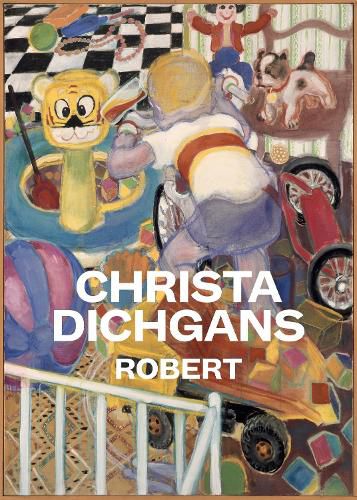Readings Newsletter
Become a Readings Member to make your shopping experience even easier.
Sign in or sign up for free!
You’re not far away from qualifying for FREE standard shipping within Australia
You’ve qualified for FREE standard shipping within Australia
The cart is loading…






Christa Dichgans lived in a male-dominated world: her first marriage to Karl Horst Hoe dicke was followed 1972 by a marriage to the renowned Galerist Rudolf Springer in Berlin. She had friendship with Markus Lue pertz and A. R. Penck, and she assisted Georg Baselitz during his professorhip in the 1980s at Berlin's Academy of Fine Arts. The German >> painter princes, << as they were later known, artists who over the course of their careers became important figures in Germany and taught figurative expression to the younger generation of the Junge Wilde (Youg Wild Ones), were indispensable dialogue partners for Christa Dichgans. The artist described her role at the time thusly: >> In the 1960s, no man felt threatened by me. Men thought I was pretty and spooky, but they didn't really take my art seriously.<< Her early works, which were long consigned to the shadows, already bore the germ of a pictorial formula that was to make the artist one of Germany's most important Pop art figures and in no way inferior to Capitalist Realists such as Sigmar Polke, Gerhad Richter, Konrad Lueg, and Manfred Kuttner.
$9.00 standard shipping within Australia
FREE standard shipping within Australia for orders over $100.00
Express & International shipping calculated at checkout
Christa Dichgans lived in a male-dominated world: her first marriage to Karl Horst Hoe dicke was followed 1972 by a marriage to the renowned Galerist Rudolf Springer in Berlin. She had friendship with Markus Lue pertz and A. R. Penck, and she assisted Georg Baselitz during his professorhip in the 1980s at Berlin's Academy of Fine Arts. The German >> painter princes, << as they were later known, artists who over the course of their careers became important figures in Germany and taught figurative expression to the younger generation of the Junge Wilde (Youg Wild Ones), were indispensable dialogue partners for Christa Dichgans. The artist described her role at the time thusly: >> In the 1960s, no man felt threatened by me. Men thought I was pretty and spooky, but they didn't really take my art seriously.<< Her early works, which were long consigned to the shadows, already bore the germ of a pictorial formula that was to make the artist one of Germany's most important Pop art figures and in no way inferior to Capitalist Realists such as Sigmar Polke, Gerhad Richter, Konrad Lueg, and Manfred Kuttner.